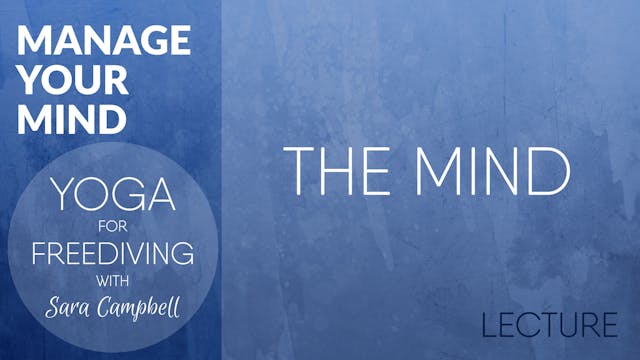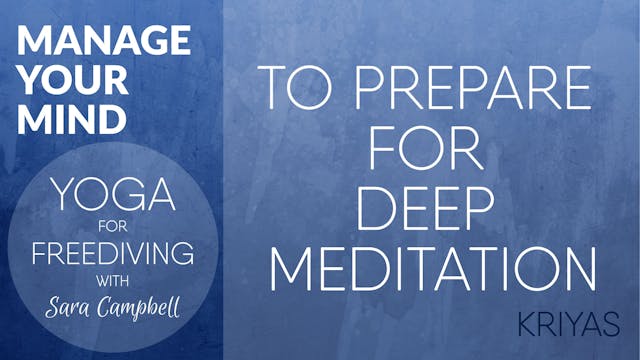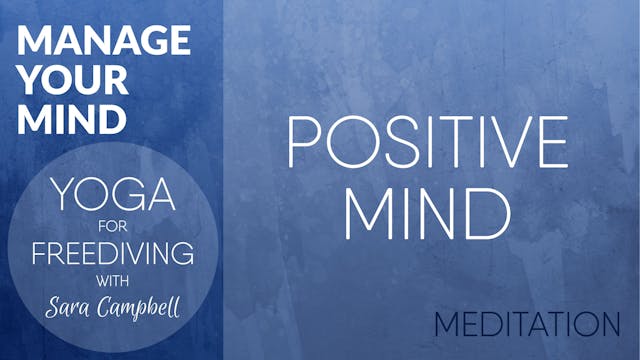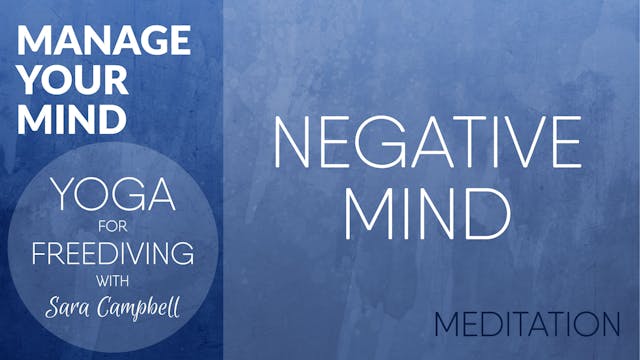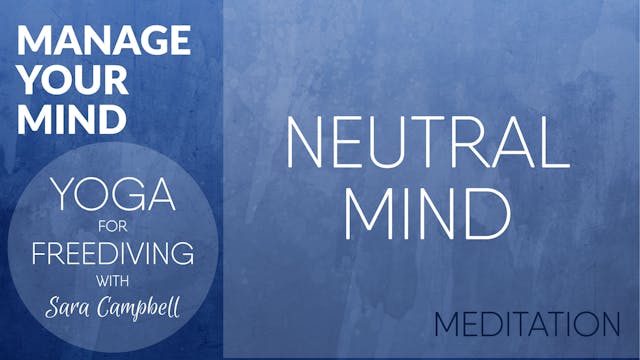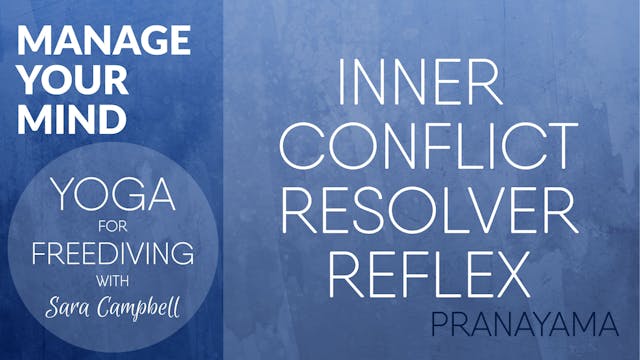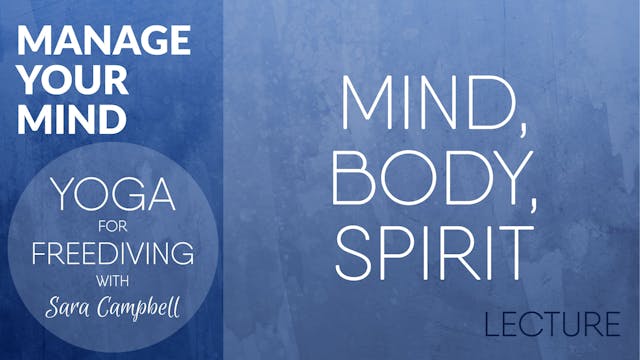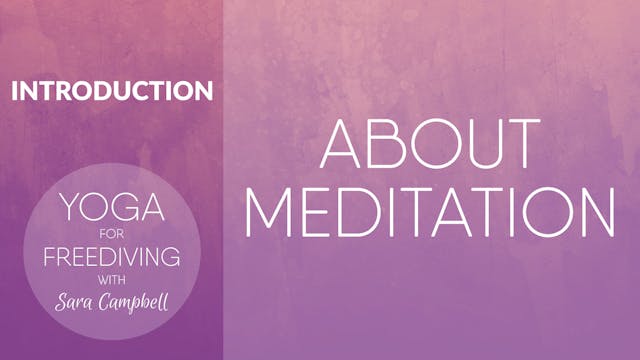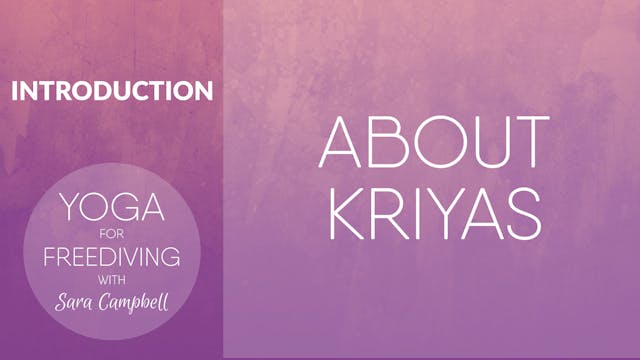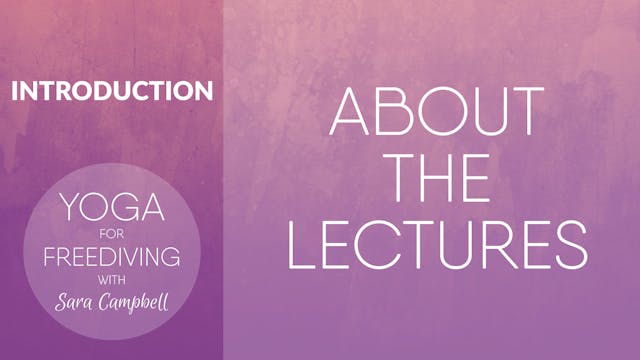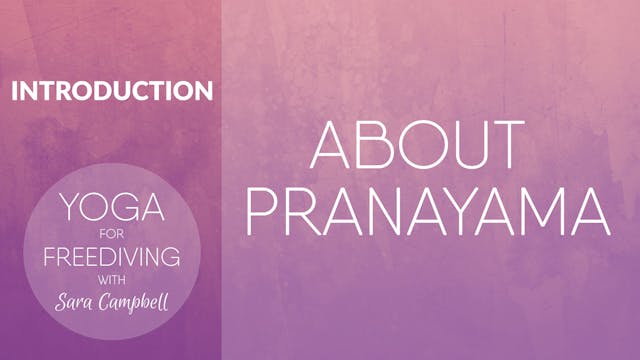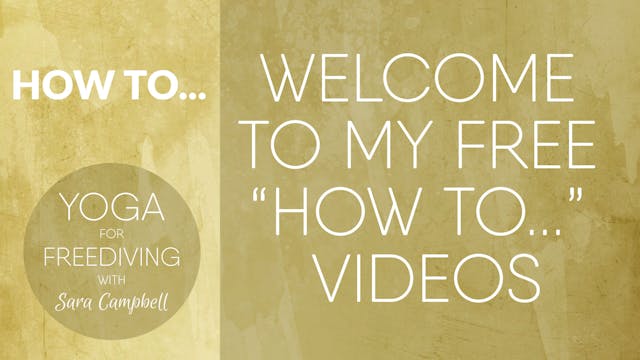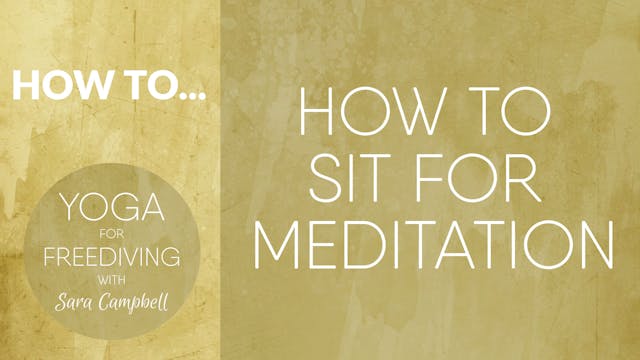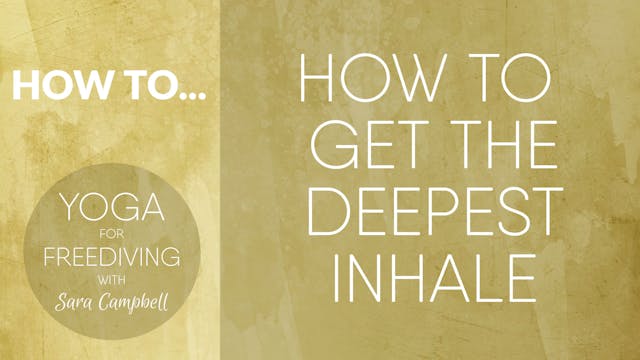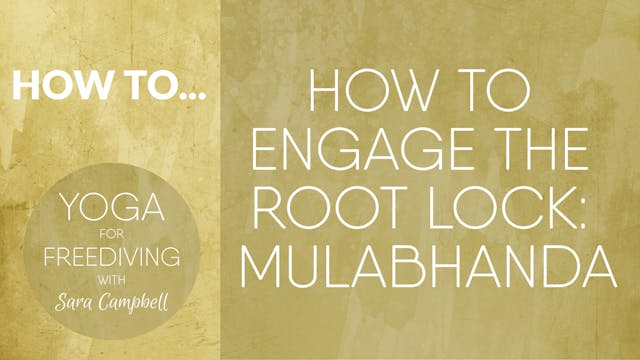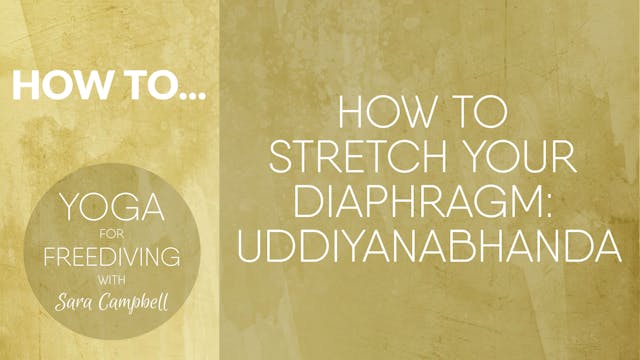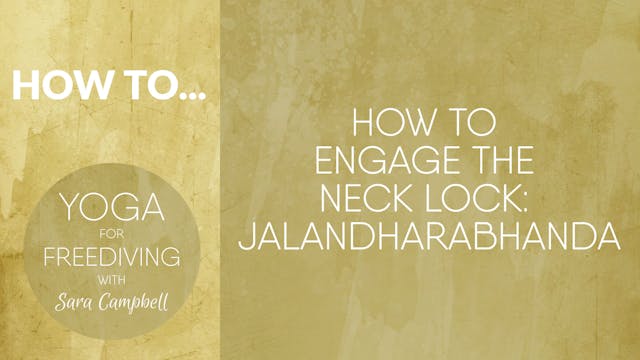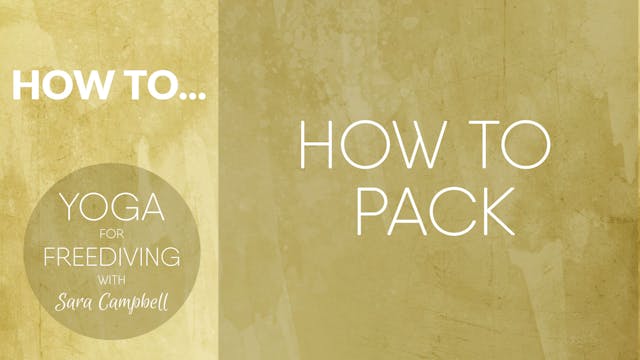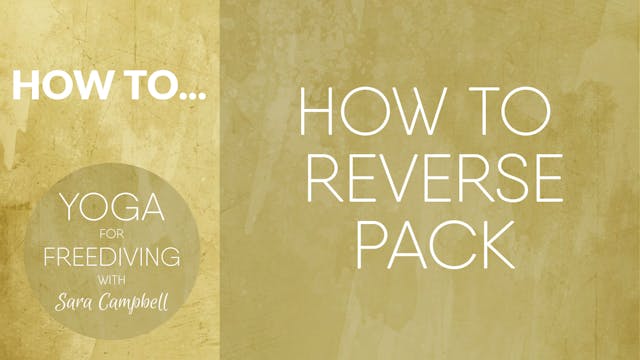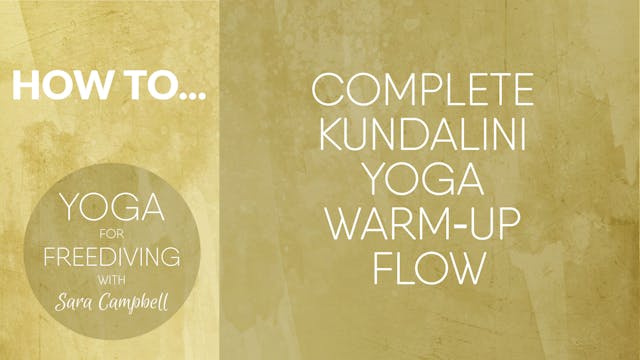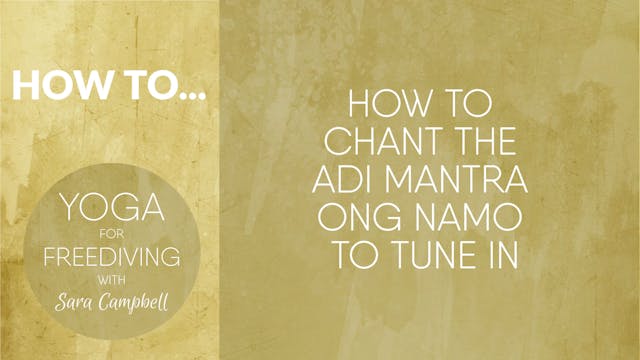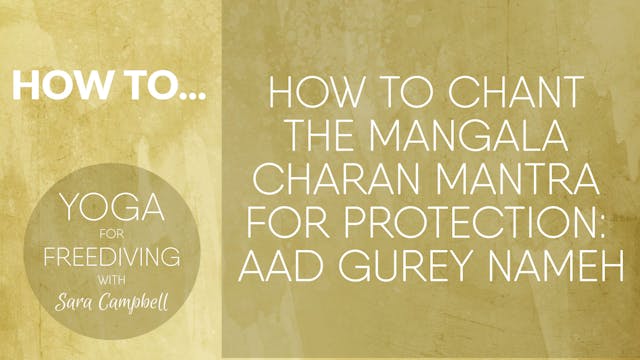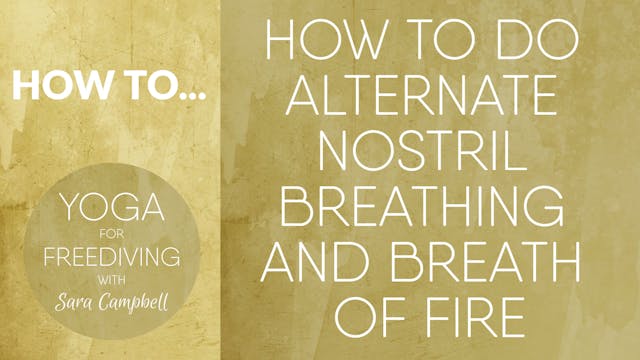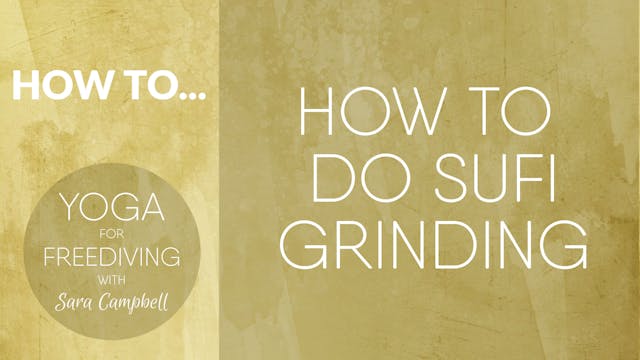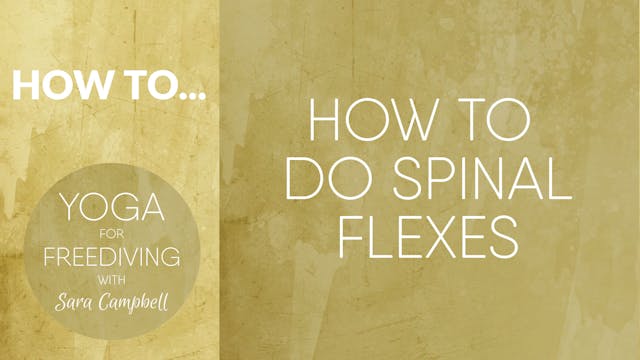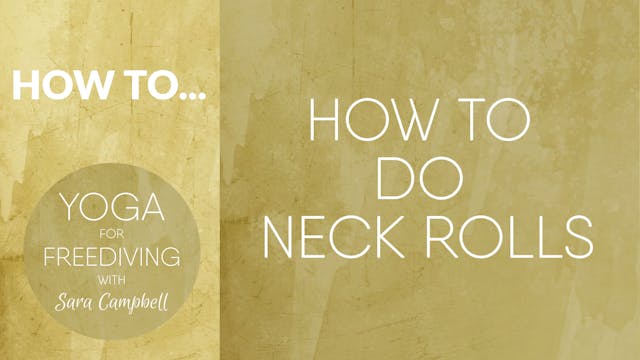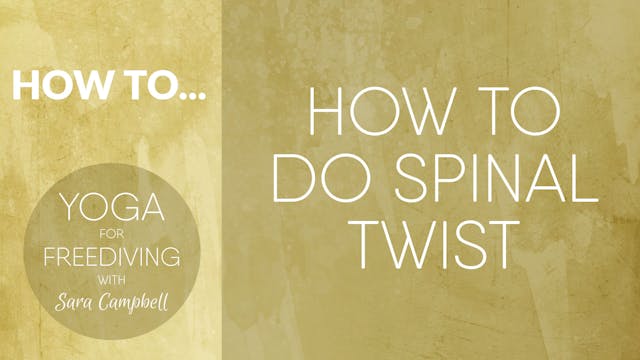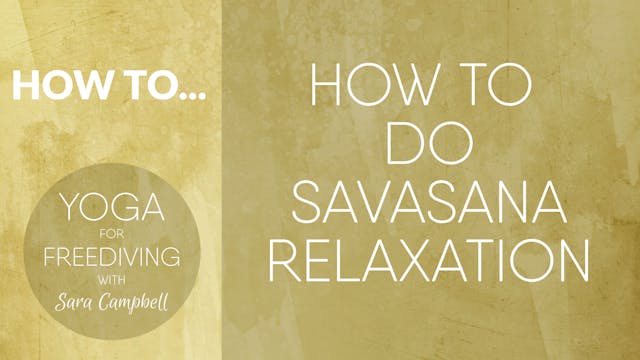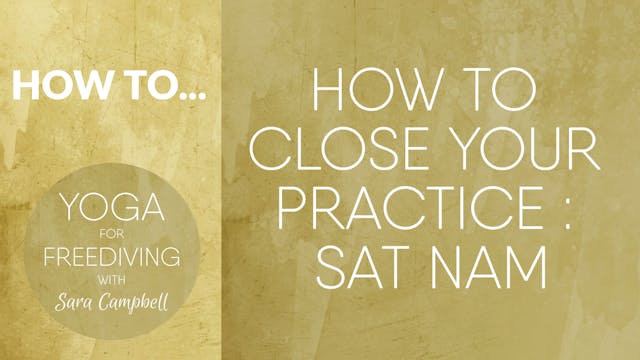Manage Your Mind
It is confusing that the single most important aspect of freediving - our mind - receives by far the least attention in any certification or coaching programme. Freedivers become obsessed with training the physical aspects and techniques, and then increasingly are frustrated when their hard work doesn't pay off. Most freedivers never receive targeted mental training, and without any constructive advice on how to proceed, they simply train harder and end up over-trained, exhausted, frustrated and resenting the time they spend in the water, instead of loving each and every dive.
The mind constitutes well over 80% of any performance, possibly closer to 90-95%. The only training Sara did in 2011 to take herself from 88m to 104m, was four dives, no warm-ups, no additional training dives in between those dives, no breath hold practice and no physical strength, flexibility or adaptation training. She did one dive every 8-10 days, and in between she meditated. Sara rested her body, and worked on the one aspect of herself which she knew has the power to take her to the next stage; her Mind.
Videos contained in this course:
- Lecture: The Mind - 28 mins
- Kriya: To Prepare for Deep Meditation - 45 mins
- Meditation: Positive Mind - 15 mins
- Meditation: Negative Mind - 16 mins
- Meditation: Neutral Mind - 18 mins
- Pranayama: Inner Conflict Resolver Reflex - 15 mins
- Lecture: Mind, Body, Spirit - 20 mins
Total time: over two and a half hours
MORE ABOUT THIS COURSE
- Seven videos and over two and a half hours of targeted MANAGE YOUR MIND training
- A further two and a half hours of tips and technique training in 22 "How to..." videos
- Video streaming on any mobile device
- Audio downloads of the lectures and visualisations to take with you wherever you want
- Step by step six week programme to ensure you get the best out of your MANAGE YOUR MIND experience
- Lifetime access to all videos and online content
WHY IS MANAGE YOUR MIND IMPORTANT?
Everything that we experience in life starts with a thought. If our thoughts are not directed, disciplined or focused, not only our dives, but our whole life, is at the whim of a mind which is often more directed by fear and negativity, than any clear, positive conscious plan.
Meditation is not simply something that yogis do to get closer to God, it is the single most important tool we have in the modern day to get our lives, our destinies and our dives going the way WE want them to go.
MANAGE YOUR MIND is a targeted programme to help you begin to bring your mind back under your control, so you can have the experiences you want – including deep, relaxed, fun, blissful dives - when you want them.
PREMIUM clients will receive a personal online consultation and three one to one sessions with Sara.
-
Manage Your Mind 1: Lecture - The Mind
-
Manage Your Mind 2: Kriya - To Prepare For Deep Meditation
-
Manage Your Mind 3: Meditation - Positive Mind
-
Manage Your Mind 4: Meditation - Negative Mind
-
Manage Your Mind 5: Meditation - Neutral Mind
-
Manage Your Mind 6: Pranayma - Inner Conflict Resolver Reflex
-
Manage Your Mind 7: Lecture - Mind, Body, Spirit
-
About Meditation
ABOUT MEDITATION: If the mind is our most powerful servant, meditation is the way we ensure the servant receives clear instructions and does what we actually want him or her to do!
Without meditation our servant is free to do exactly what he wants, when he wants, and then we wonder why our di...
-
About Kriyas
ABOUT KRIYAS: The word 'kriya' means 'completed action'. It is therefore both a single exercise and a series of exercises that is designed to have a specific outcome. The kriyas in Kundalini Yoga work to direct energy within our body and mind by using specific breathing techniques combined with a...
-
About the Lectures
ABOUT LECTURES: This is as close to personal coaching with me as you can get without actually getting on a plane. These lectures form the basis of my teachings, primarily looking at, gaining awareness over, and learning to work with our minds, belief systems, and fears.
If you want to know ho...
-
About Pranayama
ABOUT PRANAYAMA: Pranayama are yogic breathing exercises based on ancient techniques and wisdom. 'Prana' refers both to our breath, and also to the life-force energy within and around us all. Pranayama therefore go beyond training simply our breath and breath hold capacity, but also work on how y...
-
Welcome to my free 'How to…' videos
ABOUT THE HOW TO... SERIES: This How to… series of videos contains bite-sized pieces of yogic and freediving wisdom, many of which were crucial in me diving to 104m on one breath!
DISCLAIMER: Yoga for Freediving courses and videos are not a freediving certification; they do not certify you to ...
-
How to Sit for Meditation
ABOUT SITTING: One of the greatest challenges to meditation is finding a comfortable sitting position. This short and simple video talks you through the options for all levels of flexibility.
The main focus for effective meditation is the position of your spine. As long as that is straight, i...
-
How to get the Deepest Inhale
ABOUT THE DEEPEST INHALE: Ever feel like you've taken your deepest inhale, but it's not quite deep enough? The chances are you are missing a very simple part of the inhale flow which will completely transform your final breath. Here I show you how.
For freedivers the final inhale is utterly c...
-
How to Engage the Root Lock : Mulabhanda
ABOUT THE ROOT LOCK: Mulabhanda, also known as mulbhand or the root lock, refers in western anatomy to the pelvic floor. This muscular lock which effectively closes off the lower end of the upper body, is essential in all parts of yoga, including meditation.
We use it to hold and direct energ...
-
How To Stretch your Diaphragm : Uddiyanabhanda
ABOUT DIAPHRAGM STRETCHING: Uddiyanabhanda relates to the diaphragm, as such it's the middle bhanda, between the root and the neck lock. In freediving, this little exercise can make or break depth progress.
Stretching uddiyanabhanda is one of the most important exercises you can do as a freedi...
-
How to Engage Neck Lock : Jalandharabhanda
ABOUT NECK LOCK: Jalandharabhanda, also called jalandabhand, or the neck lock, is essential in yoga and particularly in meditation.
It is also, for freedivers, known as the glottis - that tricky little bugger that you need to keep locked in order to keep your mouthfill.
Neck lock is taught...
-
How to Pack
ABOUT PACKING: Packing is a useful tool in freediving training. Packing must be introduced and used with CAUTION and respect as it carries certain risks and adverse effects for the freediver.
Packing when used in dry stretching routines is very useful for increasing the lung capacity, enablin...
-
How to Reverse Pack
ABOUT REVERSE PACKING: Reverse packing, as the name suggests, is the opposite of packing - and is essential for safe, deep diving.
Many people, particularly early on in their training, focus on packing in order to expand their lung volume. However, for anyone wanting to dive deep, reverse pac...
-
Complete Kundalini Yoga Warm-Up Flow
ABOUT THE FLOW: These warm-up exercises can be used to prepare for other practice, or can be used in their own right. This flow will leave you energised, yet relaxed.
I used and adapated these exercises to prepare myself for my deep freedives and I know they have helped all of my students to ...
-
How to chant the Adi Mantra Ong Namo to Tune In
ABOUT ONG NAMO: We begin every practice of Kundalini Yoga with the Adi Mantra: "Ong Namo Guru Dev Namo'. This mantra is the foundation for my four World Records in freediving.
I explain more about this magical mantra in my DEEP RELAXATION programme, but learning to chant it, and enjoying the ...
-
How to chant the Mangala Charan Mantra for Protection : Aad Gurey Nameh
ABOUT AAD GUREY: This mantra is often used after the Adi Mantra when tuning in for our practice, but it can be used alone and is great for protection.
Chanting mantra is not the same as singing. It doesn't matter if you have a good voice, or are in tune. It is about the vibrations you create ...
-
How to do Alternate Nostril Breathing and Breath of Fire
ABOUT PRANAYAMA: These two simple breathing exercises, or pranayamas, are two of the most important yoga breaths you will learn.
Alternate nostril breathing is great for bringing awareness to the breath, the sensations of the breath and for creating balance.
Breath of Fire is used to stimu...
-
How to do Sufi Grinding
ABOUT SUFI GRINDING: The poor Sufis…. Haha! Don't worry, no-one was harmed in the making of this video! :-)
Sufi grinding is my favourite yoga warm-up exercise and here I show you how to do it. It helps to soften and relax the whole of the spine, encourages deep, powerful breathing which clea...
-
How to do Spinal Flexes
ABOUT SPINAL FLEX: Spinal Flex exercises help us to systematically warm-up and wake up the spine. Our spine performs so many amazing functions for us throughout our daily lives that it deserves and needs to be looked after and given a bit of love. This is the perfect way.
Along with the other...
-
How to do Neck Rolls
ABOUT NECK ROLLS: Neck rolls are a simple part of our yoga and freediving stretches. We all carry stress and tension in our neck, throat, jaw, shoulders and upper back and this simple exercise can help us to identify and release some of it.
For freedivers suffering equalisation problems, the i...
-
How to do Spinal Twist
ABOUT SPINAL TWISTS: Let's do the twist! This yogic version of the twist focuses on the spine, this time increasing its flexibility through the vertical axis. It opens up our chest and shoulders, helps to stretch and tone the waist and gives all of your digestive organs a wonderful massage.
Al...
-
How to do Savasana Relaxation
ABOUT RELAXATION: Use this little video on its own when you want a quick time-out from your day, or a boost to your energy. It is essential we balance our stressful lives with regular relaxation - here's how!
It is recommended to practice this every day for 11 minutes if you're a man, and thr...
-
How to Close your Practice: Sat Nam
ABOUT SAT NAM: We end all of our yoga and meditation practices with Sat Nam. It means 'I am Truth' or 'Truth is what I am' and is a way to connect with our authentic self, beyond our perceptions and beliefs of who or what we think we should be.
The mantra also appears in many of the meditation...
-
Lectures to Go - Mind, Body, Spirit.mp3
36.7 MB
-
Manage Your Mind - Six Week Programme.pdf
422 KB
-
How to Manage Your Mind - article.pdf
401 KB
-
Inner Conflict Resolver Reflex.pdf
55.2 KB

